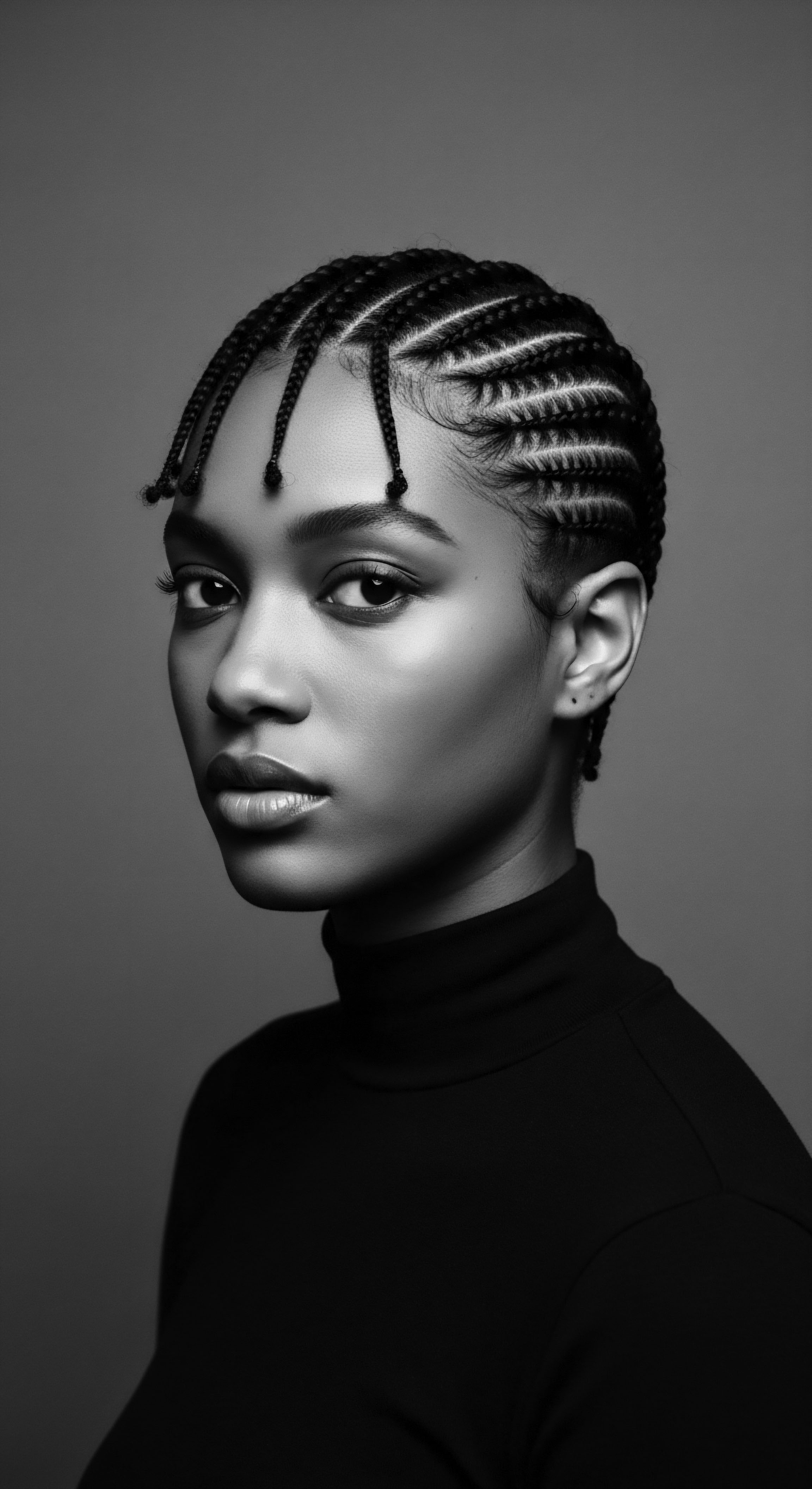
Roots
The very strands upon our heads, especially those that curl and coil with their own vibrant spirit, carry within them the silent wisdom of ages. For those of us connected to textured hair, our coils speak a language of resilience, adaptation, and an enduring story. This story often finds its deepest echoes in ancient traditions, a testament to the fact that hair care was never a fleeting fancy; it was, and remains, a sacred dialogue with ancestry. In ancient India, this dialogue was particularly profound, shaped by spiritual convictions, societal structure, and a deep respect for the natural world.
Here, the treatment of hair transcended mere grooming; it became a ritual, a symbol, a testament to identity, and a repository of personal and communal history. The beliefs surrounding hair care in ancient India stand as a vibrant example of how heritage breathes through every aspect of life, including the very way we tend to our crowns.

Ancient Understanding of Hair
The ancient Indian worldview, particularly as expressed in the Vedas and Ayurvedic texts, understood the human body as an interconnected system, where physical attributes, spiritual well-being, and cosmic energies were inextricably linked. Hair, in this schema, held a significant position. It was not simply a biological outgrowth; it served as a conduit for spiritual energy and a physical manifestation of an individual’s connection to the divine. This perspective meant that hair care was not just about superficial appearance; it was about maintaining balance, inviting auspiciousness, and aligning with cosmic rhythms.
The perception of hair’s anatomy was intertwined with these broader cosmological understandings. While modern science details the cortex, cuticle, and medulla, ancient seers considered hair’s vitality a reflection of inner bodily fluids and energetic flows.
One common belief held that hair could retain energies, both positive and negative, making its regular cleansing and ritualistic attention crucial for spiritual purity. The concept of hair as a conductor of energy also influenced practices surrounding its management during sacred ceremonies. To illustrate, during religious rituals, leaving hair unrestrained was often associated with chaos or distraction, potentially disrupting the sacred atmosphere. Tying one’s hair, especially for women, symbolized respect, discipline, and a focused intention to connect with the divine, protecting the crown chakra—the supposed gateway to higher consciousness.
In ancient India, hair was seen as a conduit for spiritual energy, deeply connected to personal identity and cosmic flow, making its care a sacred practice.
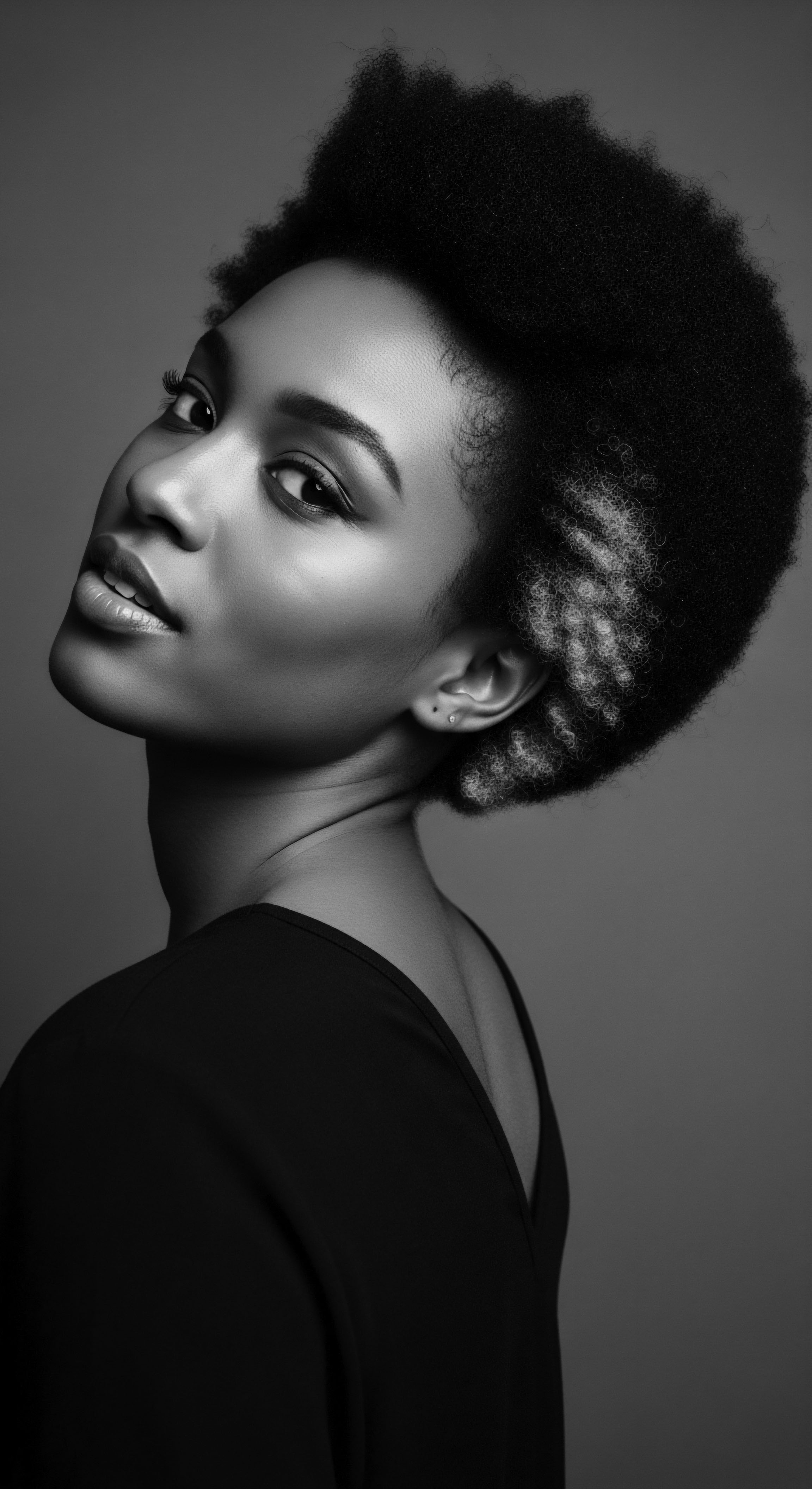
Hair and Social Order
Hair styles in ancient India were far from arbitrary. They functioned as visual markers of Identity, Social Standing, and even Spiritual Affiliation. Different communities and roles within society adhered to specific customs regarding hair, reflecting a finely tuned system of social communication. For men, short, neat hair often signaled maturity and adherence to societal duties, particularly for married individuals.
Ascetics, on the other hand, frequently wore their hair matted or entirely shorn, a deliberate renunciation of worldly attachments and a statement of spiritual pursuit. This deliberate unkempt appearance symbolized a rejection of vanity and materialism, directing focus toward inner growth.
For women, hair practices were especially rich with cultural significance. Long, oiled, and carefully styled hair, often in braids or knots, was a prevalent ideal, signaling marital status and societal expectations. Loose hair, while sometimes a symbol of beauty or informality, could also signify vulnerability, defiance, or ritual impurity, as seen in the Mahabharata narrative of Draupadi, who left her hair unbound in a vow of retribution after public humiliation. This historical episode powerfully illuminates how hair was not merely an aesthetic choice, but a potent symbol of one’s psychological state and social position.

Early Lexicon and Ancient Types
The ancient Sanskrit texts hold a rich vocabulary for describing various hair textures and styles, underscoring a nuanced understanding of hair diversity, even without modern scientific classification systems. The Amarakośa, an ancient thesaurus, lists several synonyms for hair, including Cikura, Kuntala, Kaca, Keśa, and Śiroruha. Curly hair received its own specific terms, such as Cūrṇakuntala, denoting finely curled locks, and Kaiśika, referring to a mop of curls. This attention to varied descriptions hints at an observational appreciation for different hair types, a recognition of texture that extends far back in time.
While detailed descriptions of what we now classify as specific ‘textured hair types’ (like 3C or 4A) are absent, the existing vocabulary acknowledges variations in curl, length, and arrangement. Archaeological findings, such as the famous Dancing Girl sculpture from Mohenjo-daro, depict hair coiled beautifully in a heavy mass, suggesting a recognition of natural hair textures and their styling.
| Hair Description/Term Kuntala (curly hair generally) |
| Cultural or Symbolic Connection Signified beauty and adorned deities and noble figures. |
| Hair Description/Term Cūrṇakuntala (finely curled locks) |
| Cultural or Symbolic Connection Used to describe delicate, often revered, hair textures. |
| Hair Description/Term Jata (matted locks) |
| Cultural or Symbolic Connection Associated with ascetics, spiritual devotion, and rejection of worldly life (e.g. Lord Shiva). |
| Hair Description/Term Long, Oiled Hair |
| Cultural or Symbolic Connection Symbol of femininity, marital status, and propriety for women. |
| Hair Description/Term Shaved Head |
| Cultural or Symbolic Connection Mark of purification, spiritual initiation, or renunciation in various traditions (Hinduism, Buddhism, Jainism). |
| Hair Description/Term These descriptions from ancient sources underscore the deep cultural significance attached to hair and its diverse forms. |
The evidence from art and literature indicates an understanding of hair’s different forms and how these forms were styled, adorned, and interpreted. The precise anatomical knowledge of hair’s molecular structure may be a modern scientific pursuit, yet the ancient Indian mind intuitively grasped the unique behaviors of different hair forms, adapting care rituals to suit perceived needs, whether for softness, strength, or spiritual adherence. This ancient wisdom, passed down through generations, truly forms the ‘roots’ of textured hair heritage.

Ritual
The daily life of ancient India was steeped in ritual, and the care of hair stood as a cornerstone of this intricate world. These practices, far from being perfunctory, formed a holistic system of wellbeing, connecting the physical self to spiritual and social dimensions. This was particularly true for textured hair, which, while not explicitly labeled as such in ancient texts, was certainly present in the diverse populations of the subcontinent.
The methods employed sought not only external luster but also internal balance, a gentle assertion that outer appearance mirrors inner vitality. The wisdom embedded in these ancestral care rituals offers a powerful continuum to our modern understanding of how to tend to our coils and curls with respect and mindful intention.
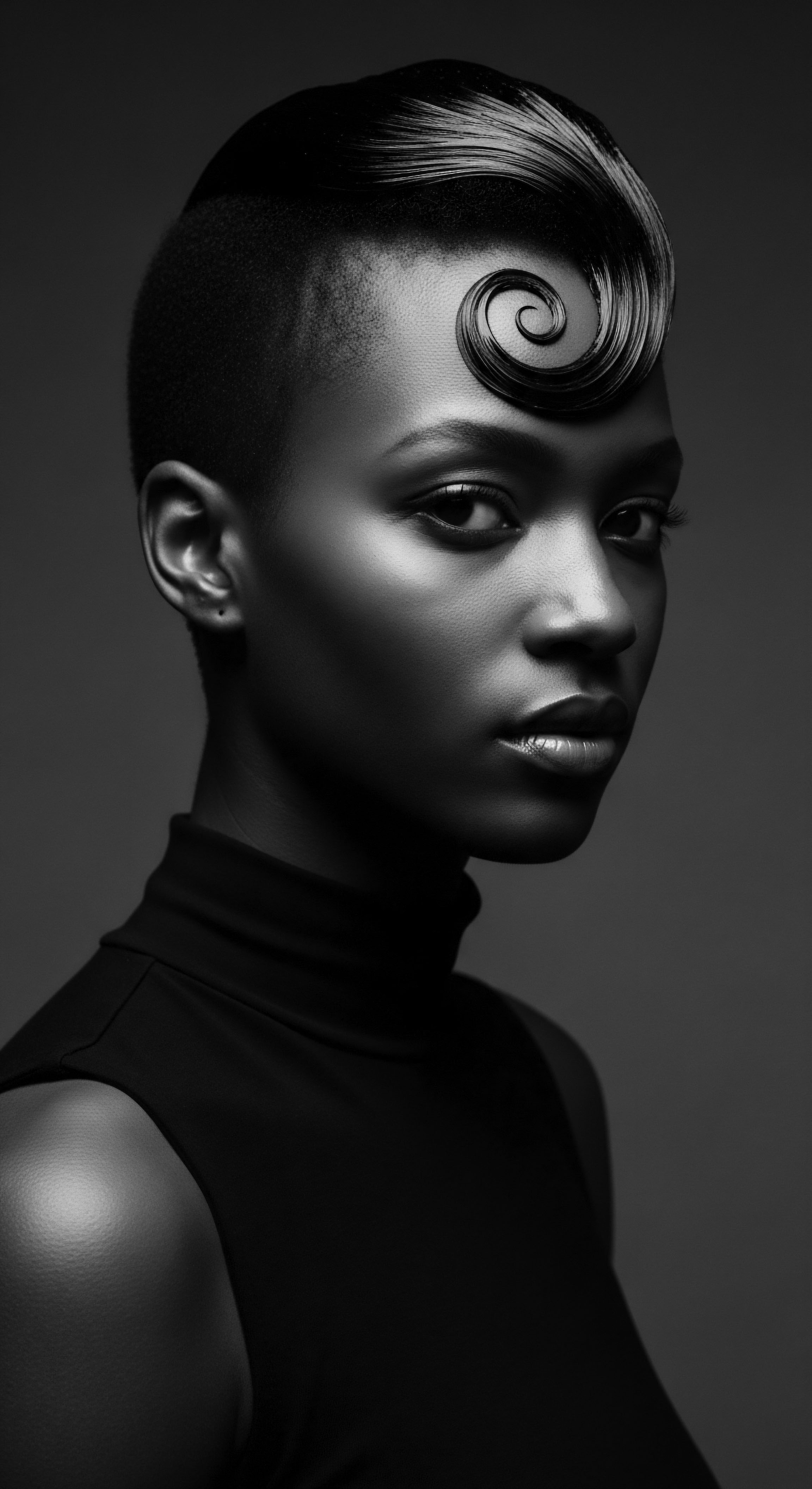
Ancestral Hair Care Practices
The tradition of hair oiling, known as Champi, stands as a prime example of ancient Indian hair care. Its roots extend into Ayurveda, the traditional Indian medicinal system, with mentions tracing back to texts like the Charak Samhita from the 1st century CE. This practice went beyond mere lubrication; it was a deeply ingrained ritual, often performed by a mother on her daughter, strengthening familial bonds and transmitting ancestral wisdom.
These sessions involved massaging the scalp with natural oils, a deliberate act to improve blood circulation, nourish hair roots, and promote relaxation. The choice of oils varied, but popular selections included coconut, sesame, and castor oils, often infused with herbs like amla, brahmi, and neem.
The significance of these oils lay in their perceived properties:
- Amla (Indian Gooseberry) ❉ Believed to strengthen hair, promote growth, and prevent premature graying.
- Brahmi (Bacopa Monnieri) ❉ Thought to calm the mind and nourish the scalp, supporting overall hair health.
- Neem (Azadirachta indica) ❉ Valued for its purifying qualities, helping address scalp conditions.
Beyond oiling, ancient Indian hair cleansing involved natural ingredients. Sudsy reetha (soapnuts) and shikakai were common alternatives to harsh chemical preparations, gently cleaning the scalp without stripping its natural oils. This attention to natural ingredients echoes through centuries, informing contemporary wellness approaches that honor the integrity of textured strands. The consistent use of such natural elements for centuries speaks to a deep, experiential knowledge of their benefits for various hair conditions, including those associated with different curl patterns.

Styling as Cultural Expression
Styling was never a simple act of arrangement; it was a powerful form of Cultural Expression and a reflection of social standing. The archaeological discoveries from sites like Mohenjo-daro and Harappa reveal a society deeply interested in hair dressing, evidenced by findings of combs and mirrors. The famous “Dancing Girl” sculpture, for instance, shows hair beautifully coiled and falling over her shoulder, a testament to the aesthetic values of the Harappan period.
Across various periods and regions, a diversity of hairstyles emerged, each carrying its own set of meanings:
- Opaśa and Kumba ❉ Styles where locks were piled on top, often resembling a horn or a dome, found in Vedic literature and still present in parts of South India.
- Kaparda ❉ A style for both men and women, involving spiraled, braided, or matted hair set on the top of the head, associated with deities like Rudra.
- Veṇī ❉ Braided hair, a very common and versatile style, often adorned with flowers, beads, or precious metals.
The elaborate coiffures depicted in ancient Indian art, from Mauryan sculptures to Gupta period paintings, show intricate braiding, knotting, and the use of ornaments. These were not merely decorative; they were expressions of a sophisticated artistry where aesthetics merged with social roles. Kalidasa’s works, for example, mention women decorating their hair with flowers, jewels, and ornamental pins, enhancing its beauty and adding a touch of sophistication.
The meticulous arrangement of hair spoke volumes about an individual’s place in society, marital status, and adherence to cultural norms. This deliberate use of hair as a form of social language carries particular weight for Black and mixed-race communities, where hair has consistently been a medium for asserting identity and defying restrictive norms.
Ancient Indian hair care rituals, like the scalp massage “Champi” and the use of natural cleansing agents, underscore a holistic approach to hair health, reflecting a deep respect for natural remedies and ancestral bonding.

Hair and Spiritual Practices
Hair also held deep spiritual meaning, playing a role in various religious ceremonies and ascetic practices. The practice of Tonsure, or ritual shaving of the head, is a prime example. In Hinduism, the Mundan ceremony for a child, typically performed in the first or third year of life, signifies purification, a shedding of past influences, and a fresh start. It is believed to promote the growth of thicker, healthier hair while also cleansing the child of negative energies.
Similarly, in Buddhism and Jainism, monks and nuns shave their heads as a sign of renunciation of worldly attachments and a commitment to spiritual pursuits. This act represents a departure from vanity and materialism, symbolizing purity and a focus on inner growth. For ascetics, the choice to keep matted hair (jata) or to shave it completely served as a powerful visual statement of their withdrawal from societal norms and their singular devotion to a spiritual path. Lord Shiva, with his matted locks, personifies this ascetic ideal, his hair symbolizing the potent power of his mind.
This interplay between personal grooming and spiritual commitment offers a unique lens through which to view hair. It transforms hair from a simple biological feature into a repository of sacred beliefs, a testament to devotion, and a living marker of one’s spiritual journey.
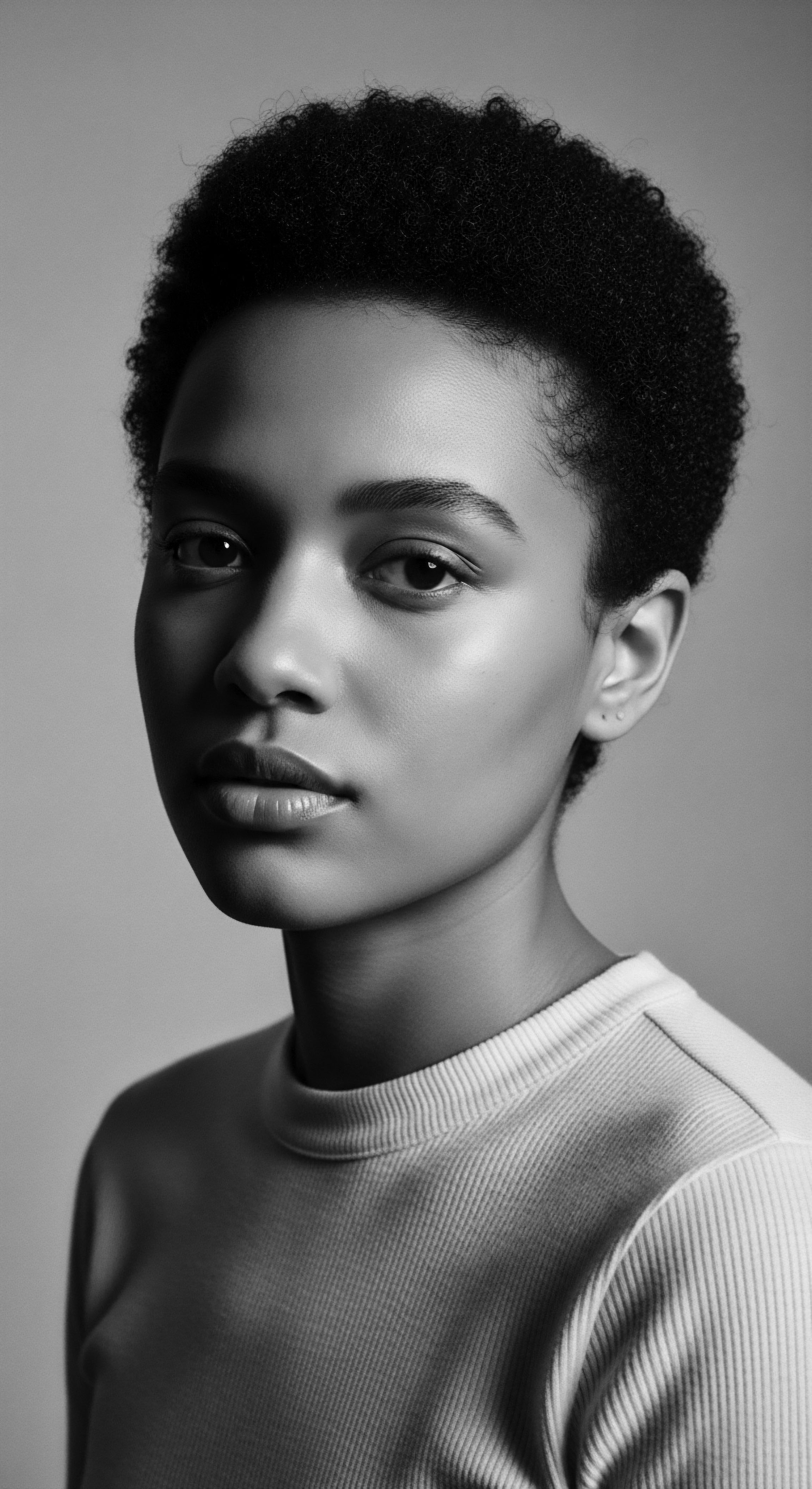
Relay
The ancient Indian understanding of hair, with its grounding in spiritual, social, and natural principles, presents a compelling framework for viewing textured hair heritage. The traditions of care that emerged from these beliefs did not simply vanish with time; they persist, evolving, and offering profound insights into the interconnectedness of identity, wellness, and cultural memory. We can discern patterns that echo through centuries, from traditional South Asian communities to the global diaspora, where textured hair often carries ancestral stories in its very structure and styling. The legacy of ancient Indian hair practices provides a lens to examine how these traditions have been preserved, adapted, and reinterpreted, particularly in communities where hair serves as a profound marker of continuity and self-expression.
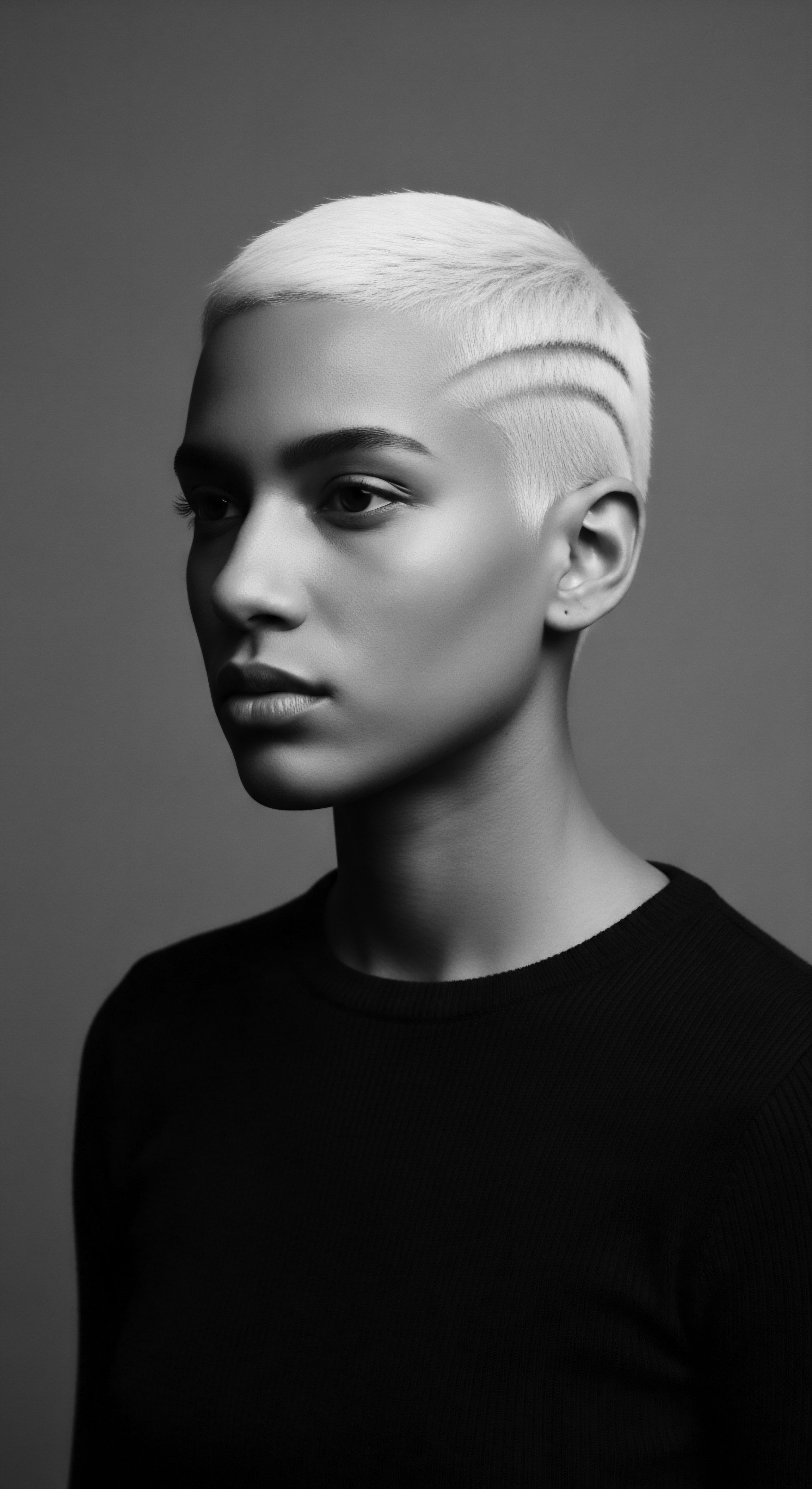
Cultural Beliefs and Hair’s Form
Ancient Indian texts and artistic representations frequently depict diverse hair forms. While specific modern classifications for textured hair did not exist, the visual evidence and descriptive vocabulary acknowledge a range of natural hair types, including those with discernible curl and coil patterns. The emphasis on long, lustrous hair in many depictions often implies a hair type capable of length and volume, which is a characteristic of many naturally curly and coily textures when properly cared for. The reverence for such hair types suggests a societal value placed on robust, healthy hair, regardless of its precise wave pattern.
The depiction of goddesses like Saraswati and Lakshmi with flowing, abundant hair, and deities like Krishna with curly hair, points to an aesthetic appreciation for varied natural hair forms within a spiritual context. This artistic tradition subtly validates the intrinsic beauty of diverse hair textures, a vital message for those navigating contemporary perceptions of textured hair.
Ancient Indian beliefs regarding hair’s vitality and spiritual connection laid a foundation for care practices that continue to inspire holistic approaches to textured hair health today.
The concept of Doshas in Ayurveda also influences hair health. Vata, Pitta, and Kapha are the three biological energies that govern bodily functions. An imbalance in these doshas, according to Ayurvedic philosophy, can lead to specific hair problems. For instance, a Vata imbalance might result in dry, frizzy hair, while excess Pitta could cause thinning.
This systemic view meant hair care was not isolated but integrated into a broader wellness regimen, employing diet, stress management, and specific herbal applications to restore equilibrium. For textured hair, which is often prone to dryness due to its structure, the ancient Ayurvedic emphasis on oiling and moisture becomes particularly relevant, echoing modern care strategies.

Historical Context and Textured Hair Identity
The presence of textured hair within the ancient Indian subcontinent is a demographic reality, given the diverse ethnic groups and historical movements throughout its long history. While direct historical accounts linking specific textured hair communities to distinct ancient Indian hair beliefs can be scarce, the foundational principles of hair care—its ritual cleansing, oiling, braiding, and spiritual symbolism—would have applied across the spectrum of hair types present. The universal application of practices like the Mundan ceremony for purification, regardless of a child’s inherent hair texture, speaks to the overarching cultural significance placed on the act itself, rather than the specific hair type. This communal aspect of ritual, where care for hair served as a binding element of shared Heritage and spiritual commitment, speaks to the enduring legacy of these practices.
Consider the Sikh Tradition, which emerged later in Indian history, but carries forward a distinct, unwavering belief in the sanctity of uncut hair (Kesh). For Sikhs, Kesh represents a natural gift from the creator, a symbol of spirituality, humility, and submission to the Will of God. This practice, especially for men, often results in long, coily or wavy hair kept under a turban. The commitment to maintaining Kesh is so profound that any negligence in this code of conduct can render a Sikh an apostate.
This specific adherence to uncut hair provides a powerful case study of hair as an absolute identifier of religious and community belonging, a living tradition that resonates with the broader themes of hair as a marker of heritage and identity in many global contexts. The very visible nature of Kesh makes it an undeniable declaration of identity, a point of connection for individuals globally who experience their hair as an ancestral link. This continuous commitment, despite societal pressures for conformity, highlights hair as a site of profound resistance and affirmation of belonging.
| Ancient Indian Belief/Practice Hair as a spiritual conduit |
| Contemporary Relevance for Textured Hair Heritage Promotes mindful hair care practices, viewing hair as a connection to inner well-being and ancestral wisdom. |
| Ancient Indian Belief/Practice Mundan ceremony (ritual shaving) |
| Contemporary Relevance for Textured Hair Heritage Symbolizes new beginnings and purification; echoes practices of renewal in self-care routines. |
| Ancient Indian Belief/Practice Hair oiling (Champi) |
| Contemporary Relevance for Textured Hair Heritage Validates the importance of scalp health and moisture retention, vital for textured hair. |
| Ancient Indian Belief/Practice Braiding and knotting as social indicators |
| Contemporary Relevance for Textured Hair Heritage Continues to be a powerful mode of cultural expression, identity, and protective styling within diverse communities. |
| Ancient Indian Belief/Practice Uncut hair (Kesh) in Sikhism |
| Contemporary Relevance for Textured Hair Heritage A powerful example of hair as an unwavering symbol of religious and cultural identity and enduring heritage. |
| Ancient Indian Belief/Practice The deep respect for hair in ancient India continues to echo in modern practices, particularly for textured hair, reinforcing cultural pride and holistic wellness. |

Sustaining Knowledge Across Generations
The knowledge of hair care was passed down through generations, often orally within families, particularly from mothers to daughters. This intergenerational transfer of wisdom forms a significant aspect of textured hair heritage globally. The recipes for herbal oils, methods for cleansing, and techniques for styling were not written solely in formal texts; they lived in the hands and memories of countless individuals.
These informal channels ensured the practices adapted to local conditions and evolving needs while retaining their core principles. Such living traditions often become a source of strength and continuity for diaspora communities, where hair care rituals link individuals to their ancestral homelands and collective identity.
The continued practice of Champi today, even if less formalized than in ancient times, remains a widely recognized aspect of hair care in India and among the South Asian diaspora. Its presence in modern beauty rituals demonstrates a direct lineage from ancient beliefs, affirming its efficacy and cultural resonance. The understanding that hair is a symbol of vitality and a reflection of overall health has always guided these practices, providing a foundation for modern holistic hair wellness. This unbroken chain of knowledge, passed through time and cultural shifts, underscores the enduring power of ancient beliefs in shaping present-day hair care practices and reinforcing the pride associated with one’s textured hair heritage.

Reflection
The journey through ancient Indian hair care and its connection to textured hair heritage reminds us that a strand of hair is never truly just a strand. It is a living archive, holding whispers of ancient beliefs, echoes of ceremonial gestures, and the quiet strength of generations. The ‘Soul of a Strand’ ethos, for Roothea, acknowledges this profound truth ❉ that our hair carries an ancestral memory, a story of spirit, identity, and enduring tradition. From the meticulous oiling rituals, designed to nourish and protect, to the symbolic power of unbound locks or shorn heads, each practice in ancient India spoke to a deeper relationship with the self, the community, and the divine.
For those with textured hair, this history provides a powerful mirror. It affirms that the care and adornment of coily, curly, or wavy hair has always been a practice steeped in intention and cultural significance. The ancient world, in its reverence for diverse hair forms and its sophisticated approach to natural ingredients, offers a profound validation for contemporary textured hair journeys.
It encourages us to see our hair not as a challenge to be tamed, but as a vibrant link to a rich past, a source of personal agency, and a beautiful declaration of continuity. As we continue to learn from these distant echoes, we find renewed purpose in tending to our hair, recognizing it as a precious inheritance, a symbol of our ancestral wisdom, and a living celebration of who we are.

References
- Moti Chandra, Cosmetics and Coiffure in Ancient India, 1973.
- Remadevi, O. Cosmetics, Costumes and Ornaments in Ancient India, 2009.
- Chhabra, Simran. “Indian women push to detangle stereotypes about hair and identity.” The Thunderbird, 14 May 2021.
- Verma, Sonia. “Exploring Cultural significance of Hair.” Daily Excelsior, 2 February 2025.
- Patel, Deepali. “Indian Home Remedies for Hair Growth ❉ 8 Ayurvedic Tips for Lustrous, Healthy Locks.” Healthline, 25 May 2021.
- Singh, Amar. “From Hair in India to Hair India.” Indian Dermatology Online Journal, 2011.
- Das, Madhu Chanda. “The Significance of Hair ❉ Cultural Wisdom and Spiritual Symbolism.” Madhu Chanda Das, 24 August 2024.
- Bhatt, N. “The Timeless Elegance of Ancient Indian Hairstyles – a Journey through the Ages.” Archaeological Survey of India, 29 June 2023.
- Aurus Jewels. “The Queen of Indian Head Jewelry ❉ Surprising Things You Didn’t Know About the Maangtika!” Aurus Jewels, 21 June 2022.
- Sanatan Forums. “The Significance of the Shikha ❉ The Tuft of Hair in Hinduism.” Sanatan Forums, 23 December 2023.
